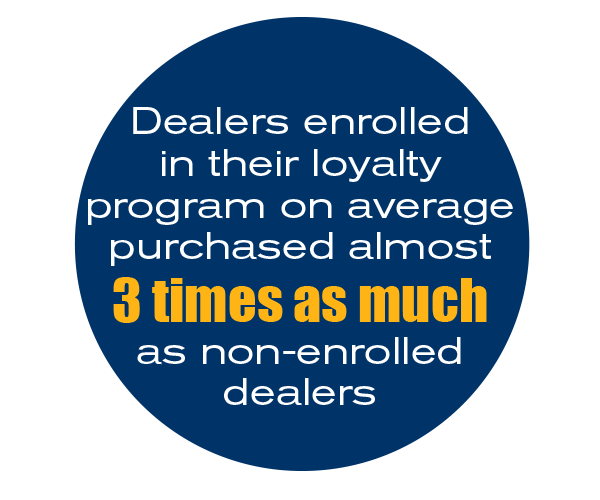Leveraging a Push/Pull strategy to move your channel loyalty forward
Written by: Jim Bergeson, Vice President, Customer Engagement Group
(View Author Bio)
Alignment between marketing and sales is an age-old challenge. Too many times what marketing is promoting is not what a company’s sales team is focused on selling. Even though there may be reasons for the disconnect, when the effort and investment is made to integrate, the rewards can be significant.

In the channel, strong relationships between a company’s sales team and their distributors, dealers or resellers are critical. They often work hand in hand selling products and services to the end user or customer. This side of the equation, often referred to as the push side, represents a lot of what sales is responsible for–cold-calling prospects, joint sales calls with channel reps, product education or training with channel partners and customers and growing market share in a territory or region.
Foundational to the push side is sales training and product education. Those sales representatives are the front line with your first line of customer—your channel partners. Getting their attention, trust and confidence is key to building a lasting relationship and positive extension of your sales investment. Sales education is foundational to any company and any industry and one of the first opportunities to integrate with marketing. Sharing marketing strategy and objectives with skills training and product education gives sales people a bigger vision for their company and how they fit into the mix of roles and responsibilities. How marketing is positioning the brand, separating it from competition and what messages are trying to be conveyed in marketing is integral to how a sales person presents themselves to a customer.
On the pull side, marketing is creating messaging, promotions and content to support the sales force. What customers are seeing and hearing should align with sales objectives, spiffs and other in-channel activities. Joint planning between sales and marketing focused on an integrated strategy, aligned tactics and activities and a common voice to channel customers and end users/consumers is a formula for greater channel engagement and loyalty to your brand, products and services.
The power of a push/pull strategy in action
A great example of the power of push/pull integration is with one of our valued clients. They manufacture a line of products that commercial and residential dealers/contractors install and repair. This client has made a concerted effort aligning what they were doing on the sales side with their marketing efforts to their dealers. Their marketing approach features a robust channel loyalty program that offers rewards to dealers for both system and parts purchases. Sales representatives have access and line of sight to what their respective dealers are purchasing, what promotions they are participating in and what learning content they’ve engaged with. This provides powerful insights for the sales team and real measured results that validate the success of the push/pull strategy.
Here are some of the results of this program:



These are just a few of the positive effects of a carefully crafted and executed push/pull strategy.
Ongoing communications back and forth between marketing and sales as to what’s working allows for redirection if necessary, or increased emphasis on something that’s resonating well with customers. It is truly a collaborative, integrated design serving both sides of the push/pull equation.
__________
If your channel loyalty program isn’t delivering the results you expect, your sales efforts may not be fully in sync with your marketing efforts. We have a long history of helping companies evaluate and execute sales incentive programs. Combining that with our proven channel loyalty approach and point of view could be your answer to a better ROI and more loyal customers.
__________
The best way to get started is to get in touch.


















